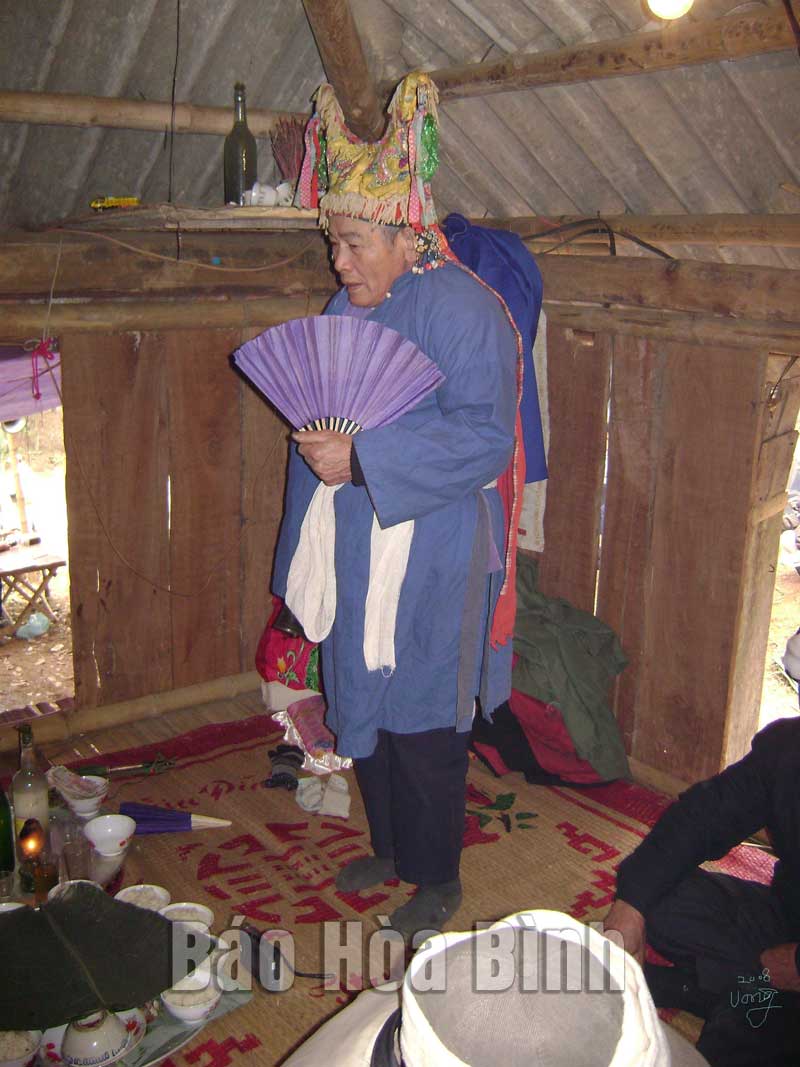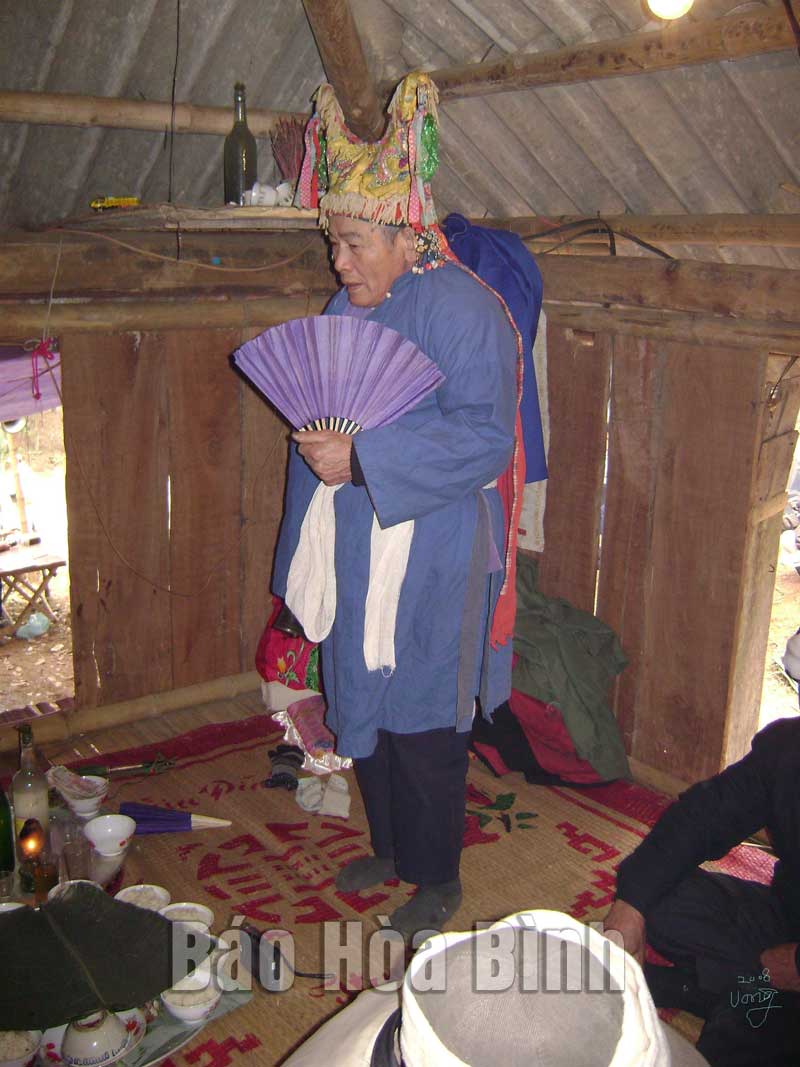
(HBO) – Preparations are being made to submit documents relating to "Mo Muong" to the United Nations Educational Scientific and Cultural Organisation to be added to the List of Intangible Cultural Heritage in Need of Urgent Safeguarding.

The late
sorcerer Bui Van Cu, residing in Bung village of Lac Son district’s Huong
Nhuong commune, performs a Mo ritual.
"Mo Muong" is a sacred ritual that has been used in funerals and some
rituals to pray for the good health of the Muong ethnic minority people.
"Mo Muong" is a job and also a performance practiced at funerals,
religious festivals, and life cycle rituals by the ethnic Muongsorcerers.
It consists of three main components namely Mo words, performing environment
and people who practice mo singing.
Mo words are divided into ‘cat Mo’ and ‘roong Mo’, similar to chapters in
literature. Each Mo chapter has its own theme and purposein a funeral
ritual.
Through the generations, "Mo Muong" has been passed down verbally in
the community.
Each person's life in different ethnic groups has rituals associated with the
human life cycle: birth, adulthood and marriage. For the Muong people,
thefuneral is the final ritual of each person's life which he/she only
enjoys when they die.
Funeral and "Mo Muong" will help deal with problems relating to
"procedures" for the dead before they are buried.
The Muong people also provide knowledge for the dead through storytelling which
includes stories about the birth of the universe, the birth of people, the
struggle for survival in the wild and knowledge of folk geography.
There are many collections of Mo,of which three main ones have been
published. The existence of various versions of Mo has helped expand the
heritage and spiritual life of the Muong people.
According to folk cultural specialists, "Mo Muong" is classified into
three categories:Mo Nghi Le(Ceremonial Mo), Mo Ke Chuyen (Story
Telling Mo) andMo Nhom(Observe Mo), in which ashaman plays an
important role.
The shaman knowstens of thousands of lines of Moby heart, as well
as many traditional rituals and customs.
In Muong society, the shaman is an intellectual and reputable person. The role
of the shaman is associated with the human life cycle: birth, old age, sickness
and death. Prayers are given for people’s health, good luck, peace,
happinessand prosperity./.
The People’s Committee of Lac Son district held a ceremony on April 28 to receive the provincial relic certificate for the ancient rock carving site at Suoi Co stream, located in My Thanh commune.
A special music show titled "The country is in the fullness of joy” has been held at Hoa Binh Square in Hoa Binh city in celebration of the 50th anniversary of the liberation of the South and national reunification (April 30, 1975–2025).
The People's Committee of Lo Son commune, Tan Lac district, has organised the local annual traditional stream fishing festival on April 19 - 20.
As a land deeply intertwined with human history and Vietnam’s millennia-long journey of nation-building and defence, Hoa Binh is often revered for its epic tales and legends.
Residents of Hoa Binh boast a rich cultural identity, reflected in their unique language, traditional attire, customs, and folk melodies – described as "sweet as honey, clear as a mountain stream.”
Lac Son district’s Vu ban town held the 2025 Truong Kha temple festival on April 12–13 (the 15th–16th days of the third lunar month). Since its revival in 2019, the festival has been organised every three years, preserving valuable intangible heritage while meeting the community’s cultural and spiritual needs.



